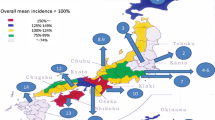Abstract
Currently an evidence-based approach to nephrolithiasis is hampered by a lack of randomized controlled trials. Thus, there is a need for common platforms for data sharing and recruitment of patients to interventional studies. A first step in achieving this objective would be to share practice methods and protocols for subsequent standardization in what is still a heterogeneous clinical field. Here, we present the results of a pilot survey performed across 24 European clinical kidney stone centers. The survey was distributed by a voluntary online questionnaire circulated between June 2017 and January 2018. About 46% of centers reported seeing on average 20 or more patients per month. Only 21% adopted any formal referral criteria. Centers were relatively heterogeneous in respect of the definition of an incident stone event. The majority (71%) adopted a formal follow-up scheme; of these, 65% included a follow-up visit at 3 and 12 months, and 41% more than 12 months. In 79% of centers some kind of imaging was performed systematically. 75% of all centers performed laboratory analyses on blood samples at baseline and during follow-up. All centers performed laboratory analyses on 24-h urine samples, the majority (96%) at baseline and during follow-up. There was good correspondence across centers for analyses performed on 24-h urine samples, although the methods of 24-h urine collection and analysis were relatively heterogeneous. Our survey among 24 European stone centers highlights areas of homogeneity and heterogeneity that will be investigated further. Our aim is the creation of a European network of stone centers sharing practice patterns and hosting a common database for research and guidance in clinical care.
Similar content being viewed by others
References
Scales CD, Smith AC, Hanley JM, Saigal CS (2012) Prevalence of kidney stones in the United States. Eur Urol 62:160–165. https://doi.org/10.1016/j.eururo.2012.03.052
Croppi E, Ferraro PM, Taddei L, Gambaro G (2012) Prevalence of renal stones in an Italian urban population: a general practice-based study. Urol Res 40:517–522. https://doi.org/10.1007/s00240-012-0477-z
Ferraro PM, Curhan GC, D’Addessi A, Gambaro G (2017) Risk of recurrence of idiopathic calcium kidney stones: analysis of data from the literature. J Nephrol 30:227–233. https://doi.org/10.1007/s40620-016-0283-8
Fink HA, Wilt TJ, Eidman KE, Garimella PS, MacDonald R, Rutks IR et al (2013) Medical management to prevent recurrent nephrolithiasis in adults: a systematic review for an American College of Physicians Clinical Guideline. Ann Intern Med 158:535–543. https://doi.org/10.7326/0003-4819-158-7-201304020-00005
Harris PA, Taylor R, Thielke R, Payne J, Gonzalez N, Conde JG (2009) Research electronic data capture (REDCap)—a metadata-driven methodology and workflow process for providing translational research informatics support. J Biomed Inform 42:377–381. https://doi.org/10.1016/j.jbi.2008.08.010
Gambaro G, Croppi E, Coe F, Lingeman J, Moe O, Worcester E et al (2016) Metabolic diagnosis and medical prevention of calcium nephrolithiasis and its systemic manifestations: a consensus statement. J Nephrol 29:715–734. https://doi.org/10.1007/s40620-016-0329-y
McGuire BB, Matulewicz RS, Zuccarino-Crowe R, Nadler RB, Perry KT (2016) Contemporary attitudes and practice patterns of North American urologists in investigating stone-forming patients—a survey of Endourological Society Members. J Endourol 30:460–464. https://doi.org/10.1089/end.2015.0207
El-Zoghby ZM, Lieske JC, Foley RN, Bergstralh EJ, Li X, Melton LJ et al (2012) Urolithiasis and the risk of ESRD. Clin J Am Soc Nephrol CJASN 7:1409–1415. https://doi.org/10.2215/CJN.03210312
Alexander RT, Hemmelgarn BR, Wiebe N, Bello A, Morgan C, Samuel S et al (2012) Kidney stones and kidney function loss: a cohort study. BMJ 345:e5287
Gambaro G, Croppi E, Bushinsky D, Jaeger P, Cupisti A, Ticinesi A et al (2017) The risk of chronic kidney disease associated with urolithiasis and its urological treatments: a review. J Urol 198:268–273. https://doi.org/10.1016/j.juro.2016.12.135
Pearle MS, Goldfarb DS, Assimos DG, Curhan G, Denu-Ciocca CJ, Matlaga BR et al (2014) Medical management of kidney stones: AUA guideline. J Urol 192:316–324. https://doi.org/10.1016/j.juro.2014.05.006
Skolarikos A, Straub M, Knoll T, Sarica K, Seitz C, Petřík A et al (2015) Metabolic evaluation and recurrence prevention for urinary stone patients: EAU guidelines. Eur Urol 67:750–763. https://doi.org/10.1016/j.eururo.2014.10.029
Ferraro PM, Taylor EN, Gambaro G, Curhan GC (2017) Dietary and lifestyle risk factors associated with incident kidney stones in men and women. J Urol 198:858–863. https://doi.org/10.1016/j.juro.2017.03.124
Prochaska M, Taylor E, Ferraro PM, Curhan GC (2017) Relative supersaturation of 24-hour urine and likelihood of kidney stones. J Urol. https://doi.org/10.1016/j.juro.2017.10.046 (ePub ahead of print)
Ferraro PM, Ticinesi A, Meschi T, Rodgers A, Di Maio F, Fulignati P et al (2018) Short-term changes in urinary relative supersaturation predict recurrence of kidney stones: a tool to guide preventive measures in urolithiasis. J Urol 200:1082–1087. https://doi.org/10.1016/j.juro.2018.06.029
Acknowledgements
We thank Arcidiacono T, Bargagli M, Bermond F, Capolongo G, Costa-Bauza A, Daudon M, David C, Maletta A, Petrova D, Rendina D, Seeger H, Stoermann Chopard C, and Zietse R for their support.
Author information
Authors and Affiliations
Contributions
PMF, OB, RJU and GG designed the study and drafted the manuscript; all authors provided data from their centers; all authors reviewed the manuscript.
Corresponding author
Ethics declarations
Conflict of interest
All authors declare no conflict of interest.
Ethical approval
This article does not contain any studies with human participants or animals performed by any of the authors.
Additional information
Publisher’s Note
Springer Nature remains neutral with regard to jurisdictional claims in published maps and institutional affiliations.
Rights and permissions
About this article
Cite this article
Ferraro, P.M., Arrabal-Polo, M.Á., Capasso, G. et al. A preliminary survey of practice patterns across several European kidney stone centers and a call for action in developing shared practice. Urolithiasis 47, 219–224 (2019). https://doi.org/10.1007/s00240-019-01119-z
Received:
Accepted:
Published:
Issue Date:
DOI: https://doi.org/10.1007/s00240-019-01119-z




